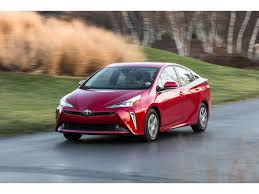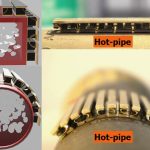
When the first hybrid cars hit showrooms roughly two decades ago, they were dismissed as science projects. But now, hybrid powertrains can be found in everything from high-end supercars, to humble taxis, and even in commercial vehicles.
Hybrids will become even more common over the next decade or so as automakers go to significant lengths to comply with strict emissions regulations. If you’re unsure as to what exactly a hybrid is and how it works, look below to find out the answer.
What is a hybrid car?
The most pertinent question of them all. Quite simply, a hybrid in the context of the automobile means that it’s powered by both an electric motor and an internal combustion engine. The two systems work directly with each other to spin the wheels.The most obvious example of a hybrid vehicle is the Toyota Prius, which was the first modern, mass-produced hybrid car when it made its debut on the Japanese market in 1997. The Prius is now well into its fourth generation, and it’s the poster child of the segment.Better fuel economy is the primary motivation behind hybridization. But, more recently, automakers are noticing that hybridization also benefits performance. We’ll get to that in a second.In essence, a hybrid’s electric motor gets its juice from an on-board battery pack that usually sits in in the trunk behind the rear seats or in the floor pan to lower the center of gravity for improved handling.When certain driving conditions favor the use of only the electric motor, such as driving below a certain speed or sitting at idle, the engine remains off and thus burns zero gasoline. When the battery level gets to a certain depletion level or if heavy throttle loads are required, the gasoline motor automatically kicks in to assist both in recharging the battery and propelling the drive wheels.
How do hybrids work?
In a conceptual nutshell, hybrid automobiles might all seem like they’re the same: they’re cars powered by both gasoline and electric power and geared toward saving fuel. That may be their main identifier, but there are variations in the designs and layouts of certain hybrids, depending on the type of vehicle and model. There are also different types of hybrid vehicles out there, though we’re focusing mainly on common consumer and commercial vehicle applications.In a traditional hybrid, like a Toyota Prius, or even a larger Toyota Highlander Hybrid, to the likes of the Honda Accord Hybrid, Chevrolet Volt and Malibu Hybrid, and the Ford Fusion Hybrid — the gasoline engine is still the primary source of overall power for the vehicle. The electric motor also produces electricity by converting kinetic energy with regenerative braking. However, without the gas engine, the hybrid’s battery pack cannot recharge to supply the electric motor and some of the vehicle’s main functions. Thus, the car would basically become terribly short-range and under-powered electric vehicle.Supplementing the gasoline engine is an electric motor often integrated into the transmission. It serves as the primary source of propulsion, whereas the gas engine is secondary. In the case of Toyota’s ubiquitous Hybrid Synergy Drive, a CVT (Continuously Variable Transmission) takes the place of the traditional gearbox and the electric motor is sort of sandwiched inside, consisting of a planetary gear set, a ring gear, pinion gears, a sun gear, and a planetary carrier.The electric motor then drives the wheels by sending power through the transmission whenever the throttle is depressed. In hybrids like the Prius or in a Chevrolet Volt, the electric motor acts solely to accelerate the car from a standstill. Once it goes over a certain speed or the gas pedal is pressed down to a certain degree, the gas engine then kicks in to assist the electric motor by sending more power through the CVT, ultimately utilizing both to drive the wheels.Controlling it all is a series of computers that automatically detect certain driving conditions and various parameters. Though with fuel economy as the primary goal, the computers prioritize the use of the electric motor over the gas engine for motivation.More recently, manufacturers also began realizing that hybrids also benefit performance and thus, they have engineered various different types of hybrid vehicles. That’s because electric motors deliver instant power, whereas internal combustion engines by contrast have to spool up before hitting their power peaks.Examples include the supercar trifecta, the Porsche 918, the McLaren P1, and the LaFerrari. All three rely on a combination of an electric motor and gasoline engine for propulsion and power. However, they’re all built and designed rather differently, especially when compared to the traditional hybrid system found in a mass-market vehicle.The Porsche 918 has twin-turbo V8 that sits in the middle of the chassis driving the rear wheels, but its electric motors are mounted at the front axle, providing the 918 with simulated all-wheel drive. The McLaren P1’s electric motor is integrated to the gas engine and mated to a dual-clutch transmission, while the LaFerrari’s hybrid capabilities involve a system initially developed for Formula 1 racing, also known as KERS, or kinetic energy recovery system.But ultimately, they all rely on electricity and gasoline for propulsion, thus giving them their hybrid status.More recently, another term also began surfacing, adding itself to the list as a variant: the mild-hybrid. The term was coined to describe one of the industry’s latest innovations: the 48-volt electrical system. It’s an additional electric supply that supplements the already standard 12-volt electrical supply used on vehicles. It also powers a new electric motor/generator combination module, or EMG, mounted outboard of an internal combustion engine and connected directly to the crankshaft pulley via a heavy-duty belt.
Why would you want a hybrid?
Odds are that if you’re interested in acquiring a hybrid vehicle, you want to save money on gasoline. Who doesn’t love paying as little at the pump as possible and going as far as possible between fill ups?As with any car purchase, you need to consider your budget and needs and find a vehicle that fits them. Thanks to their popularity, there are many hybrid models of all shapes and sizes to choose from. Those wanting a regular car-based hybrid can spring for the Toyota Prius, the Hyundai Ioniq, and hybrid versions of various other models are available, too. If standard cars don’t entice you, there are hybrid crossover SUV options as well.Some luxury automakers such as Lexus also produce hybrids. Other manufacturers of hybrid vehicles include Hyundai, Kia, Ford, Chevrolet, Honda, Audi, Mini, BMW, and many more.
Conclusion
A hybrid car can be a great way to save money on gas, provided you pick the right one and have a good idea of how it will be used before you buy. With so many hybrids on the market, and with more coming in the next few years, there is certainly no shortage of options.


